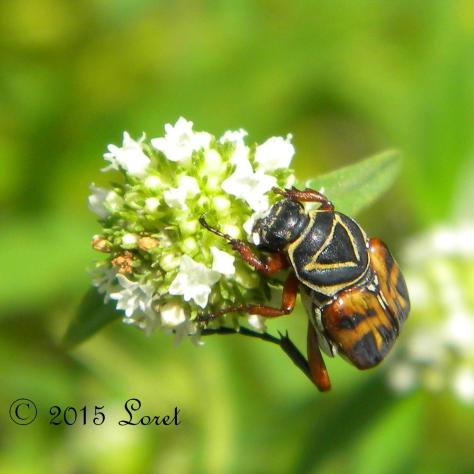Dateline: June 12, 2015*

Next week, June 15-22, 2015 is National Pollinator Week. As we all know “butterfly gardens” are the rage. Of course everyone will set out to create a garden haven adding nectar and larval host plants to encourage the fluttering beauty of butterflies. When bees join in the gardeners are thrilled as well, and often they will say they have a “pollinator garden”. But pollinator species extend beyond those two limited classifications.
It is time to also give voice and be accepting of the additional pollinators including, but not limited to Diptera (flies), Coleoptera (beetles), Ants and Wasps. Even the wind performs pollination, so give it a salute next week as well.
It may be that pollination takes place by fauna or wind based on certain traits that a particular flower has.
Ok, sometimes the pollination is accidental as they go about their business to gather provisions to feed their own young, but it is pollination just the same. Rely less on commercial species such as honeybees and work toward establishing a garden that supports a variety of native pollinators.

You have to consider that sometimes one species relies on the demise of another in order to reproduce. Don’t be quick to discourage parasitic wasps just because they are laying their eggs on your butterfly caterpillars. Consider that they too become pollinators, so all things being equal does it really make sense to save one butterfly over what could potentially be several wasps that can also do the pollination? And, couldn’t those several wasps feed numerous spiders which in turn can feed multiple lizards, which might feed several snakes, that would grow many hawks, etc., etc., etc.,
Don’t get into frenzy if a beetle is dining on your plant. Beetles pollinate, some are predatory keeping other species in check and they may also serve as the next meal for your favorite bird.

Don’t be too quick to give a particular species of anything priority of another. A monoculture of any one thing would eventually lead to a decline in all life. Everyone has a role in the food chain, so work toward balance.

Personally, I’m happiest when I see a plant that’s a little chewed…that’s what plants are for. Feed and accept all life cycles, not one particular element and you’ll be doing a whole lot better service to the biodiversity of fauna in your beautiful wildlife garden. Feed life!

*This tale was originally published by Loret T. Setters on June 12, 2015 at the defunct national blog beautifulwildlifegarden[dot]com. Click the date to view reader comments.




2 thoughts on “Pollinator Week: More than Bees and Butterflies”